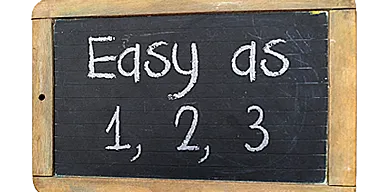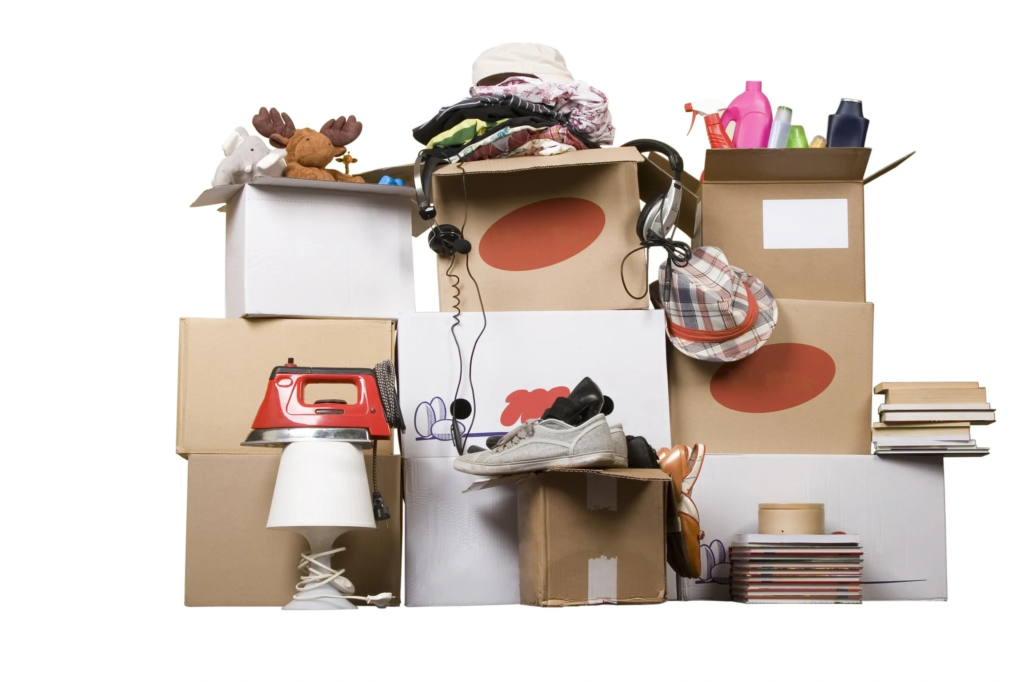No Anxiety Back to School Tips

It’s that time of year when stores have flashy “Back to School” signs with big arrows leading you to the freshly minted school supplies. Schools start sending paperwork and forms to fill out for the upcoming school year, and even a few leaves are starting to change color amidst the 80-degree days. For many parents it’s a bittersweet time. They’ve enjoyed having more time to spend with their children and living at a slower pace, but alas, the school bells call and there is knowledge to be gained! It’s time for parents to start changing gears and prepare for the fall. There’s so much to do! So, first, take a deep breath. Good. Now repeat after me: “I can get everything done at a reasonable pace and we’ll have the best fall ever!” (Rinse and repeat as often as needed to stay sane.) Follow these 6 guidelines to decrease your stress levels and get organized for back-to-school season: 1. Focus on the positive. It’s important to start with your mindset. The school season will be more fun and pleasant if you help set the tone. Kids love summer. Many of us do. It reminds us of our carefree childhood days in warm weather. We’re barbecuing with neighbors, playing at the beach, and there’s no shortage of outdoor fun to be had. But, things are going to change. A mother’s mood is the thermostat of the household. She affects all household members—even the dog. Start the transition process with a positive attitude, and you will have a happier home. You can harness your ability to influence the home and use it for good! Start talking about the exciting things coming in the fall. Intentionally talk about the fun activities they’ll be doing. They may not be “signed up” for anything, but there’s always something to look forward to (brightly colored trees, a trip to the apple orchard, late night bonfires). According to a recent article about positive thinking, “Segerstrom and Sephton (2010) also examined whether optimism predicted positive affect. Their hypothesis that changes in optimism would predict changes in positive affect was borne out, as increases in optimism were associated with increased positive affect, and vice versa. Interestingly, changes in optimism were not related to changes in negative affect. Thus, it appears that optimism is uniquely related to positive affect.” Stay focused on the good that lies ahead as you tackle the following steps. 2. Dominate your calendar. Let me begin by saying there is no “right” way to manage your calendar. There are digital people and there are paper people. If you have a system that works for you, go with it. Quit second guessing yourself. We’re all unique and what works for some of us, may not work for others. It’s important to have a schedule and plan as best as you can to eliminate stress. Take the time to write down every single activity on your schedule. Post your family calendar in a public place or use an app to share calendars so everyone knows what’s happening. It’s helpful to color code the various activities if you have more than one child. Start a list of carpool friends and look ahead for conflicts so you can reach out ahead of time. No parent likes to be informed of tomorrow’s choir concert that you need to go out and buy a new pair of pants for, in addition to having something else scheduled that same night. 3. Coordinate Dependencies. After you feel confident in your calendar, you can determine what needs to get done. Your daughter starts soccer in two weeks, so you need to try on last year’s cleats and potentially buy new ones. Your kids have games that coincide on the same night, so you need to make sure everyone has a ride. You get the picture. There are a lot of balls in the air for parents these days. By planning ahead, you will decrease stress and make all activities more enjoyable for everyone. 4. Purchase school supplies early. Schools mail out lists ahead of time, but you can also find them online before you receive the school notice, so YOU can decide when to shop. Getting an early jump on this is another stress reducer. Busy moms have a low threshold when it comes to running to three different stores to find the required calculator the night before school starts. Because stores sell out, it’s best to get the shopping done as early as possible to make the least amount of stops. Reflect on your previous shopping experience. If you went all together as a family and it was a fun night, great. Rinse and repeat. If not, try a new strategy. Take one kid at a time and make it a “date” night with a special treat at the end. (This is a good time to throw in those positive fall thoughts again.) 5. Gently adjust sleep schedules. Many kids have been sleeping in and enjoying the lazy days of summer. Fall is typically more structured, and therefore can make for a rude awakening that first day of school when we wake up three hours earlier than we’re used to. Yikes! Help your kids gently adjust by reintroducing an earlier bedtime and having them get up earlier the week or two before. Our bodies have amazing clocks that can work for us or against us. Retrain their bodies gently by waking them up 15 minutes earlier each day. It’s kind of like giving up caffeine. If you decrease your quantity, your body doesn’t notice when it’s completely eliminated, but if you quit “cold turkey” you’re likely to have a whopper of a headache. Doing this one simple step will help you have a positive and smooth transition into fall. 6. Add cushion and grace to your schedule. As much as possible add some cushion into your schedule. Don’t overcommit money or time until you’re sure you can take it on. As activities and the school year gear
ONE Secret to Accomplishing New Year’s Resolutions

A new year is exciting. The new year holds the promise of hope, fresh starts, new adventures, and oftentimes, new goals (aka resolutions). The advent of a new year got me thinking to my own life and a growing business. I’ve never been one to make New Year’s resolutions. I think this is because early in life I would get swept up in others declaring their resolutions and they usually sounded like such great goals that I thought I’d take a crack at it. I’d declare one or more resolutions when asked with almost no thought and absolutely no plan of how to accomplish these goals. Honestly, today I couldn’t tell you even one of these from my past. Invariably, I would forget about my resolutions a week later (or less). This of course was a reflection of my entire life where my decisions were not so much heading toward something but just grabbing onto an idea that sounded good at the time. The next New Years I couldn’t remember the previous resolutions and I’d set another resolution, while feeling a little “less than” about my ability to accomplish last year’s goals. Yes, I know what you’re thinking. It was probably the same resolution as the year before since I hadn’t done a thing to accomplish this goal. You’re probably right. After a few years of this I realized I had no intention or plan of how I was going to accomplish these resolutions so I quit setting myself up for failure and gave the whole thing up. I was curious about the origin of resolutions and did a little research. It looks like the hoopla around the new year goes back to the Babylonians and Romans as you can read below from History.com: The ancient Babylonians are said to have been the first people to make New Year’s resolutions, some 4,000 years ago. They were also the first to hold recorded celebrations in honor of the new year—though for them the year began not in January but in mid-March, when the crops were planted. During a massive 12-day religious festival known as Akitu, the Babylonians crowned a new king or reaffirmed their loyalty to the reigning king. They also made promises to the gods to pay their debts and return any objects they had borrowed. These promises could be considered the forerunners of our New Year’s resolutions. If the Babylonians kept to their word, their (pagan) gods would bestow favor on them for the coming year. If not, they would fall out of the gods’ favor—a place no one wanted to be. A similar practice occurred in ancient Rome, after the reform-minded emperor Julius Caesar tinkered with the calendar and established January 1 as the beginning of the new year circa 46 B.C. Named for Janus, the two-faced god whose spirit inhabited doorways and arches, January had special significance for the Romans. Believing that Janus symbolically looked backwards into the previous year and ahead into the future, the Romans offered sacrifices to the deity and made promises of good conduct for the coming year. Christians tried to redirect the rowdy goings-on in the 1700’s: For early Christians, the first day of the new year became the traditional occasion for thinking about one’s past mistakes and resolving to do and be better in the future. In 1740, the English clergyman John Wesley, founder of Methodism, created the Covenant Renewal Service, most commonly held on New Year’s Eve or New Year’s Day. Also known as watch night services, they included readings from Scriptures and hymn singing, and served as a spiritual alternative to the raucous celebrations normally held to celebrate the coming of the new year. Now popular within evangelical Protestant churches, especially African-American denominations and congregations, watch night services held on New Year’s Eve are often spent praying and making resolutions for the coming year. Why do New Year’s Resolutions Fail 2017 In my research, I’ve come to learn that it’s not just me who’s suffered failed resolutions year after year. Over and over I heard what History.com acknowledged, “Though it’s a pretty well documented fact that most New Year’s resolutions fail…” How discouraging. Why do we keep this up? It doesn’t seem like a good idea to start off the new year assuming we’ll fail at our goals. Fast forward 20 some years and I have decided to jump back in. However, I do not accept that I will fail. I have realized the wisdom of the saying, “if you don’t know where you’re going, how are you going to get there?” At the time of writing this blog in early December (I can’t do everything during the holidays), the most popular 2017 resolutions were not out. I would imagine next year’s list will be somewhat similar (unless it has some political resolution like ousting the president after the rocky election cycle we just had). According to Gobanking.com, the top five New Year’s Resolutions of last year (2016) were the following: I’m assuming this is a decent cross-section of Americans who stated these resolutions, which leaves me wondering, how did we do? The truth is we can say we want to ‘Enjoy life to the fullest’, but by the end of the year, how do we know if we accomplished this? What did we do differently? What does that REALLY mean? “Failing to plan is planning to fail.”Alan Lakein I really believe for many people there is ONE KEY to successfully follow through on your resolutions. I also have some other thoughts on how to accomplish your resolutions but that is for another day….maybe another career in coaching. 🙂 The key is (drumroll please) getting organized. I’m sure you’re not surprised hearing this from me, but stick with me and I’ll prove it. Look back at Americans 2016 goals. Yes, really, reread them please. As I was reviewing this list, I realized how connected organizing is to these resolutions. Below is a quick list with just a FEW benefits of being organized:
ADHD Organizing Tips

Approximately 11% of children 4-17 years of age (6.4 million) have been diagnosed with ADHD, according to parent reports from 2011-12. The number of young children (ages 2-5) with ADHD increased by more than 50% from the 2007-2008 survey (www.cdc.gov). This condition is prevalent and growing. I’m guessing, like me, you know several people affected by it. If you’re one of those dealing with ADHD it affects everything in your lifetime management, productivity, your home, your work, relationships and so on. Challenges in getting organized for the ADHDer are: 1) They have trouble with working memory which is used for temporarily holding information available for processing.2) Their brains are under-aroused so they are always seeking stimulation.3) They are linear sequential thinkers that often skip tasks. So they go from A-B-F without performing C-D-E. Therefore they miss important steps.4) They tend to be pleasure-centered thinkers which can cause them to make quick choices that are not in their long-term best interest. In ADHD, there is “now” and “not now” so they put off many tasks to “not now”.5) They have a lot of intentions and try to get the perfect system then get overwhelmed. They tend to beat themselves up 10x worse than anyone who may criticize them. Organizing tips for success: 1) When starting to organize, start with a room that is important to them or they’re most interested in to keep them engaged.2) Group all incomplete projects together so they can see the amount of things they think they’re going to get to.3) They need their organizing and maintenance to be fun in some way or they’ll avoid it. Turn the music on. Loud.4) Be there with them. Even if you’re not helping in the organizing or task at hand, just be nearby or in the room to ground them to the space and tasks to be done.5) They tend not to estimate time well. Use a timer to time tasks so they know how long it takes. If they know the dishwasher only takes 5 minutes to empty they’ll be more likely to do it next time.6) Use color wherever possible – labels, folders, bins.7) Self-care is important: Plenty of sleep, eat protein, take medication, take breaks for a fun activity after say 20 minutes.8) Have a plan B with the system. They like to mix it up or they get bored and lose interest and quit doing the system. ADHD folks (and many others) need help in processing their items. They need questions to be asked so they can accurately assess if the item has value to them. Sometimes a simple question of “keep or toss” is too much and they don’t know how to decide. Questions to ask them about their stuff that might help move them along: 1) If this were broken, would you immediately replace it? If they answer, “No I haven’t used that in a year.” Tell them that’s a pretty good indication that they can get rid of it.2) If someone offered you money for this, would you accept it?3) Did you remember having this?4) Do you remember using this in the last year? On the bright side, there are some really positive characteristics of folks with ADHD too. They are some of my favorite people! 1) Hyper-focus. An awesome thing to have if you can effectively channel all that attention and energy into work that makes a difference.2) Resilience. They adapt and push forward with new strategies.3) Ingenuity. They’ve had to overcome hurdles and think outside the box to live life functionally counter-culturally.4) Spontaneous. Sometimes acting on impulse results in wonderful things!5) High energy. This can be contagious and motivating for others to get things done. Most of the time I can relate to my client’s challenges more than see our differences. We’re all unique, we need to help each other reach our full potential.
Help! How Do I Get Rid Of THIS?!

As a professional organizer, I visit many homes. My clients do not fit any certain profile – singles, marrieds, ages ranging from 25 to 80, kids, no kids, etc. I’ve noticed with the variety of clients that I have, there are some categories of belongings that I see repeatedly wreaking havoc on my client’s spaces because they don’t know how to get rid of them. Towards that end I wanted to provide some suggestions to become a minimalist – haha just kidding – to get rid of those nagging unwanted household items. Here’s my recommendation. Do what is easiest for you to do. Idealism and perfectionism keep us stuck. Choose realistic instead of idealistic. Choose progress over perfect. Top 6 Tricky Items To Get Rid Of: 1. Paint 2. Medications (including sharps) 3. Non-donatable clothing 4. Electronics 5. Books 6. Baby Items PAINT MEDICATIONS Pills/capsules Needles NON-DONATABLE CLOTHING (stained, ripped, or overly worn) ELECTRONICS BOOKS/BIBLES BABY ITEMS DISCLAIMER: If you live outside of the twin cities, my apologies as these are local resources. These are some suggestions, but by no means an exhaustive list. This is for household use only, not businesses. Policies change so you may want to call the location before you make a run. Hence this information is as of January 2018 and not necessarily until the end of time. 🙂
Staying Afloat On The River of Life

Fall is here. A change of season, a change of schedule, and a change in temperature. If you’ve been on planet earth more than a minute you’ve discovered that we all have to deal with change. Some of us fight it, others thrive. Whether you like it or not, change is inevitable. Weather and schedule changes are one thing, but how do we deal with other changes like job loss, new babies, divorce, marriage, or death. Change can bring with it a swirl of emotions and reactions. When change happens, even welcome change, we can become disoriented, stressed, and scared. There may be unknowns that throw us into an isolating path, or at least that’s how it might feel. You may be wondering what this has to do with the organizing and productivity business? In a word: Everything. As you experience all sorts of changes related to health, relationships, home, career, business direction, and new life stages you need someone to come alongside and help you navigate, sort of like a Sherpa, providing guidance and encouragement to keep going forward. When things change, there is usually a loss. Even with amazing changes like a new baby, there is loss of freedom and being an independent couple who spends as much time as they’d like focusing on each other. Following the loss, we may experience grief. Feelings of sadness can confuse us because the change is positive. On the other side of grief, there is opportunity. A new normal. Something ending makes room for something new beginning. This can be unexpectedly great. In the last few years I have gone through tremendous change. Change I did not want or anticipate. Challenges and change I fought against for years. Change that left me swirling in a tornado of unknown feelings and paths. In my deepest grief, God gave me a spiritual upgrade. The opportunity for growth was there and among the new discoveries were new passions and purpose beyond what I could have hoped or imagined. God is so good. Change has been hard but also fruitful. The River Analogy Life is like a river. The river is always moving, it has long winding paths with twists and turns. And let’s face it, sometimes rapids. Imagine this: You are floating down a river in your own tube. You’re wearing a vest, like a fishing vest, that has carabiners (clips) all over it. Each carabiner has a “thing” about your life hooked on it. Things like jobs, kids, belongings, relationships, feelings, and schedules. Each carabiner represents “things” you’re carrying. As you float down your river, you tend to get more things clipped on your vest. You get a job (add a clip.) Your wife has a baby (add a clip.) You buy a house (add a clip.) You receive a promotion at work. (Yes please I’ll add that clip – and the bigger paycheck, thank you very much.) No one is hired to do your job, so you keep those responsibilities (keep the clip on from your last job.) Your kid starts soccer (add a clip.) You buy a jet ski (add a clip.) Your aunt gets cancer and you want to help (add a clip.) Your dog dies. In theory you let a clip go but if you shove all your dog’s items in the hall closet (even if you’re not getting another dog), you still keep the clip. You hurt your knee, PT or surgery is in your future (add a clip.) Your boss offends you (add a clip.) You remodel the kitchen (add a clip.) As you can see, your vest gets very full and heavy just living life. Many things get added to your vest that add weight, even good things like a jet ski. Because whatever you own, you need to manage. It’s a mix of initiated change and change that happens to you. Oftentimes change adds clips without removing any. It takes intention to remove clips. Change is the constant process of adding and removing things clipped to us. The key to moving forward down the river is not having more clipped to us that we can manage. In order to not get weighted down, things need to be unclipped. If we just keep adding without letting go, we will eventually sink. Now back to the river. Imagine all along the shore, there is a wire that floats just above the surface. It is accessible all the way down the river. You never lose sight of it. This wire is called ‘Not Now, Maybe Later.’ This is a place for clips to live that cannot be discarded right now but need to be taken off your vest in order to adapt to change. An example of this is when my step-father was dying of cancer. My mom had some health complications and my sisters lived out of state, so I was the only close by to step in to help. At the time I was home schooling my two girls. I decided to unclip ‘Homeschooling’ from my vest that year and clip it on the ‘Not Now, Maybe Later’ wire. The wire and choice were still there when I went back to it later. Our ability to make effective decisions about our clips, determines if we’ll sink or keep moving. If you don’t keep floating down the river as you’re supposed to, you won’t be able to receive the amazing things in your future. Things that are down river that you can’t see yet. Things that are good. They are not coming upstream to meet you. You must go down to find them. You vest must have some room on it for your future. How can you do that if you’re stuck upriver weighted down by things in our past? If you are “change- challenged”, don’t worry, there are some things you can do to navigate change differently. Today is a new day. It’s a day for unclipping what’s not needed anymore. Tips to create conditions where
Is It LIT? (aka Spark Joy)

Get it? In other words, do you think your belongings are LIT? Lit is a current word that means something is really good, intense, fun, or exciting. (Yes I have a teenager.)With Americans everywhere asking themselves, “Does this spark joy?” so I thought I’d coin a new, trendy phrase. Do you think it will catch on? Probs Not. (Whoops, I slipped into teen jargon again!) If you don’t know what I’m talking about, let me fill you in. Since January, Marie Kondo’s new Netflix show, Tidying Up has been causing quite a buzz. I have watched a few episodes and read Marie’s first book a few years back. It is interesting revisiting this method years after I read her book and after I became a CPO®. I thought I’d explore where KonMari and TSO methodologies meet and diverge. No right or wrong with each, just unique. Each organizer is a unique person so we all have our own experiences and education that has formed our opinions. Things I like about the KonMari method and watching the show:I like that she focus’ on what you want to keep rather than what you should get rid of. Where BTO diverges from the KonMari method:I have on occasion sort/purged by category with clients. This can work well, particularly with clothes. She does not seem to be concerned that you review all your pants at once, whereas I find it helpful for clients to review by type with clothes. This helps them see they have 10 pair of black pants so they can pair down. Of course this is a bit more of a practical approach verses spark joy approach. What would happen if no black pants sparked joy – they’d end up with none and need to shop! Oh, The Questions!Since I’ve only been exposed to some of her style and teaching, I have many questions: In a recent article from the StarTribune, people are changing shopping habits to ask, ‘Does this spark joy?’ before they purchase. This is great awareness. One of the easiest ways to head towards less clutter is to not even let the items in the door. When my clients tell me they have a hard time resisting sales I remind them, “It’s 100% off if you don’t buy it!” You can’t beat that deal. The sparking joy trend that Marie Kondo has inspired is needed in our post-modern society. It’s sparking reflection on how we live our lives and what we value. Do we value our time? People? Rest? Peace? The amount of belongings we manage impacts all those things. Many people are digging a little deeper into their life, their habits, their environment and their STUFF to realize there is hope. We don’t need to live overwhelmed by “stuff”. There’s hope. So kudos to you, Marie. Well done!
Successfully (and Sanely) Preparing For a Move

Many who are moving have been in their homes for many, many years. Typically this means that they have acquired a lot of things. If I’ve observed anything from owning my own home it’s this: We hang on to useless items IF we have the space to store them. Why is this? Because then we don’t have to make decisions and process the hard choices. (It’s really not necessary to find the tattered coffee table book a good home.) We succumb to fear. (Wow, that’s a strong statement.) Let me explain by stating some of the more common fears: Trying to process through these fears can cause overwhelming feelings, which leads to avoidance and getting stuck. Few occasions bring on a purge like a move. It provides a natural opportunity to assess our belongings and deal with our fears. Many are downsizing to a simpler lifestyle, which requires living in a smaller space with less “stuff.” We must process through our own belongings and potentially other family members’ belongings. Trust me, you don’t want to box up that volleyball set you haven’t used in five years. But you are tempted to do just that because then you don’t have to make a decision. Getting Unstuck: How to Prepare for a Smooth TransitionMoving is an overwhelming task, even if you consider yourself an organized person. If you take a little time to plan what lies ahead, you’ll be more prepared and less stressed through the process. Here are recommendations to help you prepare: Tackling the Process of Packing It will also let you spend the time to correctly assess your items before the chaos of packing begins. During the packing process, you will likely come across additional items. And that’s okay.
Am I a Failure?

Anyone ever feel like a failure? Be honest. Maybe not a total failure in life but a failure in something you tried to do. Or maybe you committed to a goal but you didn’t reach it. Perhaps you tried to create a new habit but instead of creating the habit something else needed your attention and you abandoned the new habit. Can you relate? This is how I was feeling. I had trouble even creating goals in the first place. For example, it has been over a year since I wrote a newsletter and even longer since I blogged. I haven’t been sitting around twiddling my thumbs but I was feeling a little irresponsible for sure. I’ve fallen short in planning, moving my business forward, and executing what I committed to, just to name a few. When we feel like a failure our thoughts tend to start reinforcing that belief. I would get someone else’s newletter and think, “See, they’re doing it. You are not cutting it. What’s wrong with you?” I’d have a new person sign up for my newsletter and beat myself up that I had nothing to offer them. No one had heard from me in a long, long time. Even my FaceBook posts had gone “radio silent.” Who’s going to hire a business that isn’t communicating? Getting Back On The Horse I think it’s ok to be in these places sometimes. It’s ok not to do life perfectly. To not run a business perfectly. When did perfection become the goal anyway? What good does it do to beat ourselves up over our shortcomings or if we’ve fallen in a hole temporarily? Piling shame on top of feeling like a failure is not helpful. We have a saying in the organizing world: Done is better than perfect. Perfect can keep us stuck. I see it all the time. It holds our head down when we try to accomplish something but think it’s not good enough. I have really been focused on my thought life lately. I’ve been breaking up with rejection, over-responsibility, independence, and grief, to name a few. They’re not easy things to break up with. Some I didn’t even know I had such a strong relationship with. I can’t say I have everything together or figured out, but I know that I’m on the right road. I am putting one foot in front of the other and making progress. I’m moving forward. I’m not yet in the vision of where I want to be in my business this year but I can still take one small step, even if it’s not clear that the step is the PERFECT NEXT STEP. It won’t be a waste of time because I’m moving forward. Life is not about success. It’s not a destination. It’s not about accomplishments. It’s not about doing everything on your to-do list. Ouch. That hurts a little to say. Life is a journey. It’s about being, not doing. It’s about showing up. Sometimes that means resting, sometimes waiting, sometimes we move laterally and not forward. That’s ok. Can you relate?Most everyone’s households and habits have changed in the last 12 months. Maybe you are feeling stressed about your space. Have you been feeling overwhelmed by all the stuff in your bedroom, the kitchen, that junk drawer, or the basement? Do you feel stuck? Maybe you are having trouble managing your time, all the meetings and items you’re “supposed” to do but experiencing distraction. To get out of my failure mindset I’m doing ONE key thing differently. Now keep in mind I didn’t have the capacity to do a lot differently, just a little. I was already feeling like I was failing on many fronts. But I can start off by changing the way I think and talk. This alone is very POWERFUL. Here’s what I’m doing: For example. I might start thinking (almost unconsciously) you are not getting anything done today. When I notice this, I say, outloud, “I am getting things done.” I keep it simple and not fancy. If I put on pants and they are tight and I might think, you are getting fat. So I’ll replace it with the opposite. I might say (outloud), “I love that you chose that salad on Tuesday. That was so good for your health!” Make sense? You Can Do ITI’m not going to tell you here’s ‘5 things to do differently to get out of this rut’. I’m just going to say, do ONE THING. Just tune into your negative self-speak and start speaking the opposite. Start speaking positively over your situation. When you catch yourself thinking or speaking negatively over your situation, say (outloud, if possible) “Hold up!” or whatever expletive you want to exclaim. Then state something positive. Don’t worry if the positive statement isn’t true now. Did you catch this? It’s important so I’ll say it agin. Don’t worry if the positive statement isn’t true NOW. You’re creating it’s truth by saying it. Weird I know but that’s how it works. But, Still…One more thing, if something isn’t working, maybe it’s time to make a change. We need to remember we have choices. My wise clients have realized this in their own lives and reached out to me to help. I’m taking their lead and doing that as well. I need to make a change with my newsletter. I’m discontinuing it. I will continue to blog and I will transfer your sign-up for the newsletter to the blog post alert. I believe I will blog (more) regularly with this change. And if I don’t, I will make another choice. Powerful thinking! So back to how I started. Am I failing? I’m going to reframe. I’m learning and growing every day. I’m right where I need to be. Guess what? I’m not doing this perfectly, this newsletter wasn’t perfect, but it’s done. Done is better than perfect. I am showing up and I am seeing positive results. I feel better. So will
The Power of Moving

Moving can be an intense time. If you’re buying and selling a home, it can be an emotional roller coaster. I say this from experience having moved in the last year after being in one place for 22 years. Regardless of why you are moving, you have an opportunity in front of you. The opportunity is to decide. Decision-making is powerful. Oftentimes clutter is indecision. You have had the space to store it, so it’s lived in a closet or room. You may have tried to declutter before but the process brings up hard feelings so you stop. You try to avoid the pain of decisions but you are really just kicking the “decision can” down the road. Once it’s down the road there are many more decisions and they can stack up on you. Now is the time. Embrace the opportunity and mentally prepare to clear some clutter. I talk to people who have moved their items and regret it. They’re surrounded by boxes at their new place and overwhelmed. It may be uncomfortable. That’s ok. It’s an invitation to grow. Moving provides opportunities to declutter at various points. Don’t think because you missed one that another one isn’t around the corner. Here are some decluttering opportunities in the moving process: 1) Staging your home. People look in your closets and drawers. Sorry, it’s true. It feels invasive but I’ve done it when looking at homes too. When your house is cluttered, it’s harder for prospective buyers to see themselves in the space. When a house has less, it looks bigger and creates positive emotions for the buyer which is what you want. 2) Packing for your move. Don’t leave all the packing until the week before you move. Try to allow plenty of time to pack before your move. This will allow you the brain space to make decisions. If you are frenzied, you won’t be able to ask questions of yourself and decide. This will inhibit your ability to be real and part with things. Usually, you can pack items that are not regularly used well before your move. For example, basement storage rooms or closets that have less used items is a great place to start, décor is another. 3) Unpacking your items in your new home. Invariably, once you are in your new space you will find things that worked in the old home but now don’t work in the new space. That’s ok. Pass them on. Sometimes clarity and readiness come later. As I mentioned, I recently moved. I have decluttered at each of these phases. It has felt wonderful to enter this new space with less stuff. To have really decided on items and make sure I still choose them is powerful. My items need to serve me, not the other way around. So let’s talk about “decision fatigue”. Often times when I’m working with clients I’m running up and downstairs, bending, stooping, climbing, reaching – you get the idea, I’m movin’. My clients are more in one spot making decisions. By the time the session is over they’re usually more tired than I am even though I may have run in a marathon in one room. Why? Because their brain was working hard. This is particularly true if you have been avoiding making decisions about your items up until this point. The reason I’m bringing this up is firstly, to validate your experience and secondly to make sure you give your brain a break. Go do something that is right brain, creative, for 5-10 minutes every hour so that you don’t wear out. Thirdly, start the decluttering tasks well in advance of your move so you’re not overwhelmed. Some Additional Tips and Encouragement Decision-making is uncomfortable at first. Start with the easy items. Encourage yourself. Say out loud, “I can do this.” Repeat as necessary (which is often). Don’t partner with one of the biggest stuff lies known to man: I might need this someday. Instead, say, I’m not using this these days so I’ll let someone else use it who needs it. Thanks and goodbye. The pit of “I might need this someday” is endless. Don’t fall in. Decluttering is not a “one and done”. We all have to be regularly evaluating our items. All you have to do is wake up in the morning and bam! you acquire something. You have to be intentional about getting rid of them. There are various stages of life and sometimes we have items laying around from a previous stage. They hide in the back of the closet, garage, and basement. No one is spending their days looking for items to declutter. Not even me. Let’s not kick ourselves for having clutter. Instead let’s congratulate ourselves for being powerful, deciding, and letting go. You got this.